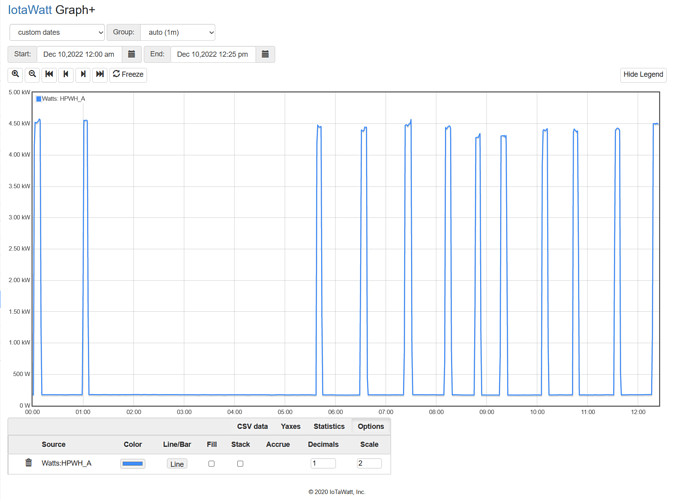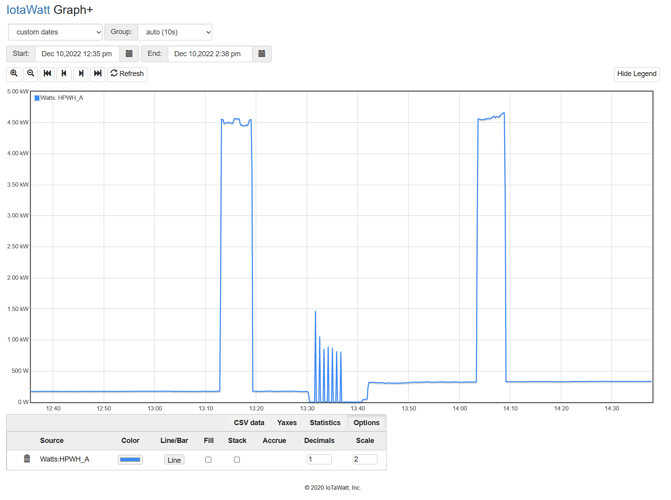I bought a HPWH five years ago but wasn’t sure about the technology, so I kept my existing standard electric one in place. I plumbed the HPWH to get the cold water and then plumbed its output to the input of the electric one. I also put bypass valves in place so I could isolate the heaters for maintenance.
On Dec 10th I was looking at my Grafana panel and noticed that power usage was high on both mains. This is not unusual, since there is a standard electric water heater at the barnyard. It usually only cycles on for a few min when water is not in active use. When it didn’t go down in a few mins I took a closer look and this is what I saw:
The low level usage of 172W is much less than normal and the peaks are one of the elements coming on. Since I have it in heat pump only mode, they should never come on (but the top element comes on when the top sensor gets below 104F, the bottom element comes on when the bottom and possibly top are both below 60F when in vacation mode). It was clear something was wrong
I looked at my receipt and I did buy the extended warranty, but it had just expired (it was only for 5 years). The HPWH has a 10 year warranty, but I figured the first thing they would do is say to reboot the water heater, so I did.
You can see the power spikes during its 8-minute startup cycle. The load then appears to be normal. But, 20 minutes later the element comes on again. At first, I was confused, but then I remembered that the heat pump still appeared to be working. I looked at the temperatures and sure enough the top was cold, so I took the HPWH out of the circuit to let the heat pump catch up. That worked fine. I decided that I wanted additional data (input and output temperatures) which meant I had to empty the tank. Since I didn’t want to waste all the hot water in the tank, I put the tank in vacation mode.
This graph shows the daily energy usage of the two circuits I have for water heating. The green bars are the HPWH. The blue bars are the regular water heater plus the well pump. You can see the normal utilization for both circuits is under 10KWh/day. But, when the HPWH is off, utilization jumps to 20-24KWh/day. So, that is 10-14 KWh/day savings from using the HPWH. In the summer, the temperature in the basement is higher so the HPWH uses about 4 KWh/day less (probably due to higher incoming water temperature and more heat available to move). At 10KWh/day and $0.12/KWh that is $1.20/day or about $450/year. I got a good deal on the HPWH (lots of rebates, so it was almost cheaper than a standard electric one). Installation was a pain. I don’t know if it will make it past its warranty period, but it does have a 10 year warranty, so they will have to replace it if it fails before then. Over 10 years that is $4500, so not a bad choice.


